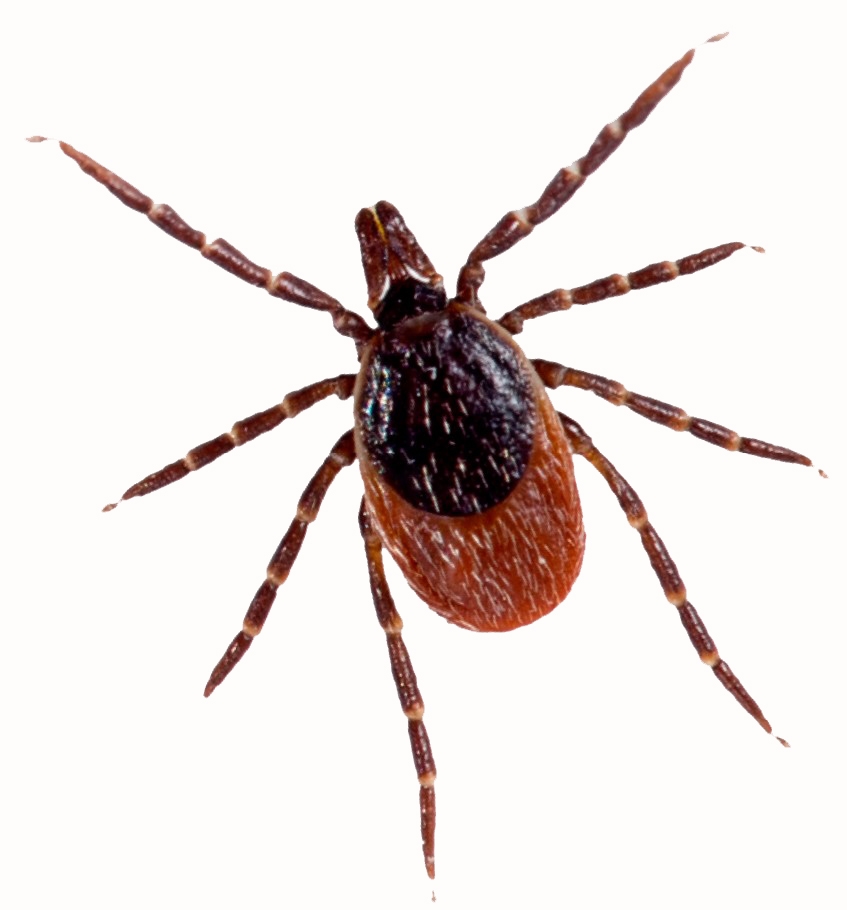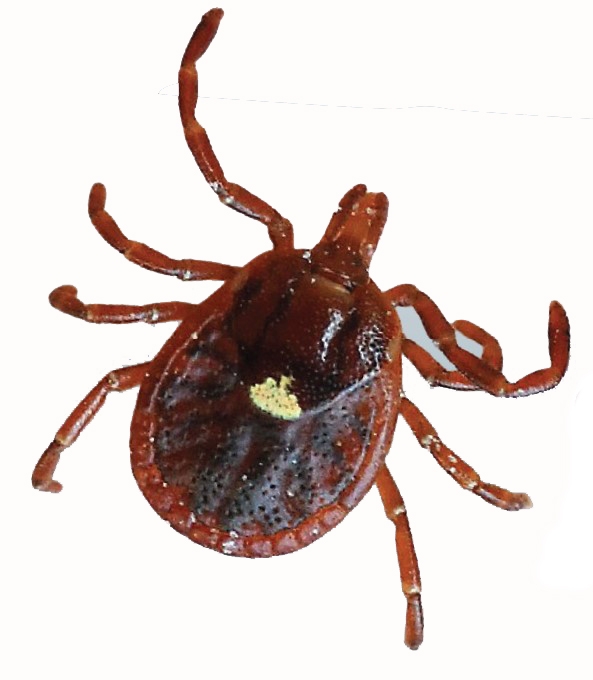Emerging Tick-Borne Viruses Infographic Tri-fold Brochure
ID
ENTO-509NP

About Ticks
Ticks are blood-sucking parasites that live most of their lives in the environment, but feed upon vertebrate animals to develop to the next life-stage. Their presence is attributed to favorable habiat, temperature, humidity, and the abundance of wildlife.
As they take blood from vertebrate hosts for their life-cycle development and reproduction, they can also pass on disease pathogens:

By this transmission cycle, ticks can acquire or transmit pathogens like bacteria, viruses, or protozoa from or to the host, which can be a human, wild or domestic animals
Compared to bacterial diseases, tick-borne viruses can have much more life-threatening symptoms and do not respond to antibiotic treatments that are normally used to treat infections such as Lyme disease

Diagnosis & Treatment
Medical diagnosis of these viruses is usually based on a history of exposure to tick bites and laboratory tests
Because these are viral infections, they cannot be treated with antibiotics. There are no treatments or vaccines for these viruses, so supportive therapies are adopted to improve patient conditions.
Avoiding Exposure to Ticks
Prevention of tick bites is the key method to avoid these tick-borne viruses. Ticks are active year-round, so care must be taken all the time. Both the blacklegged and the lone-star ticks are usually found in wooded and brushy areas.
So, when going outdoors, be sure to:
- Wear EPA registered tick repellent with a minimum of 20-30% DEET on the skin and 0.5% permethrin on clothing.
- Perform regular tick checks and take a shower once in home.
- Tuck your pant legs into your socks.
Ticks in the region
The blacklegged tick (Ixodes scapularis) and the lone star tick (Amblyomma americanum) are associated with the transmission of rare, but fatal, viral pathogens: Powassan, Heartland, and Bourbon viruses, each capable of causing damage to vital body organs and even death.

BlackLegged Tick
More concentrated along the western edge of the state. Adult are typically less than 3 mm in length with black to dark brown legs. Females have orange to red coloration on their lower back.

Lone Star Tick
Predominantly found east of the Blue Ridge Mountains at elevations below 1,600 ft. Adults are brown to tan, females have a single white pigment spot on their back.
Powassan Virus (POWV)
Transmitted By: BlackLegged Tick
Symptoms: fever, fatigue, body aches, and vomiting. Also can cause severe damage to vital organs such as the brain and the spinal cord, within 1-4 weeks of transmission.
Confirmed cases: One case reported in Virginia in 2009.
Heartland Virus (HRTV)
Transmitted By: Lone Star Tick
Symptoms: fever, fatigue, head and body aches, nausea, diarrhea, decreased appetite, weight loss and joint pain, within 2 weeks of infection.
Confirmed cases: No HRTV cases have yet been identified in Virginia.
Bourbon Virus (BRBV)
Transmitted By: Lone Star Tick
Symptoms: fever, fatigue, body aches, and vomiting. Just like with HRTV infection, patients display reduced platelets and white blood cells.
Confirmed cases: No human cases of BRBV in Virginia as of yet; however the virus is known to be circulating (Cumbie et al. 2022)
While it's true that there have been little or no human cases yet reported for Virginia, there is an increasing concern regarding these viruses

POWV cases are increasing nationwide.
Besides that, serological evidence from Virginia wildlife and livestock, and confirmed cases of HRTV and BRBV in neighboring states, suggest that these viruses are circulating locally and, therefore, highlight the need for awareness that they are a potential risk in Virginia.

There is a need to monitor ticks and their viral pathogens in Virginia
Virginia Cooperative Extension materials are available for public use, reprint, or citation without further permission, provided the use includes credit to the author and to Virginia Cooperative Extension, Virginia Tech, and Virginia State University.
Virginia Cooperative Extension is a partnership of Virginia Tech, Virginia State University, the U.S. Department of Agriculture (USDA), and local governments, and is an equal opportunity employer. For the full non-discrimination statement, please visit ext.vt.edu/accessibility.
Publication Date
July 18, 2022



